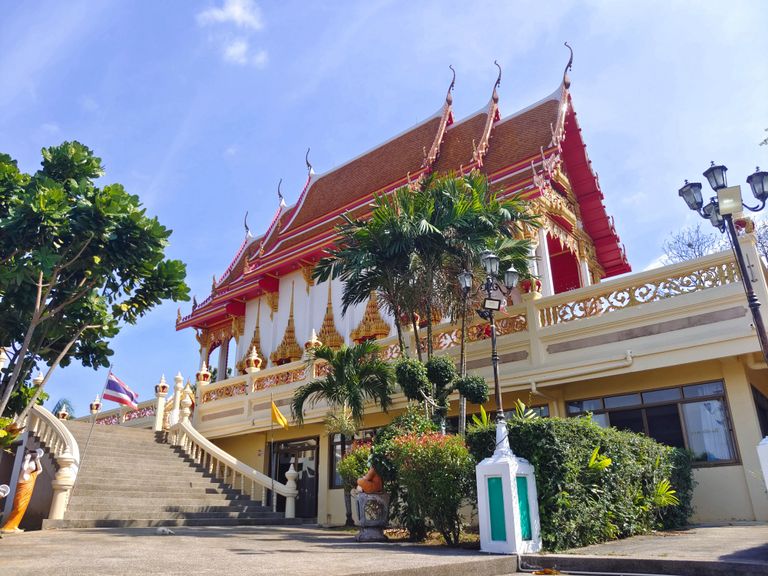
Hello everyone! 🌴
Have you ever had one of those days when the weather feels so perfect that staying indoors just isn’t an option? That was exactly how I felt in Phuket on this beautiful day. The sky was a brilliant shade of blue, stretching endlessly above, and a gentle breeze carried the promise of adventure. It was the kind of weather that made me think, “Today’s the day!”—the day I finally visit Wat Sapum Thammaram.
This hidden gem is not as famous as larger temples like Wat Chalong, but that’s part of its charm. Nestled in a quiet area, it offers a sense of tranquility that’s hard to find elsewhere. Wat Sapum Thammaram is a perfect reflection of Thai Buddhist architecture and culture.
I was ready to explore, reflect, and soak in the peaceful atmosphere of this serene temple. Let me take you along on this journey! 🌸✨
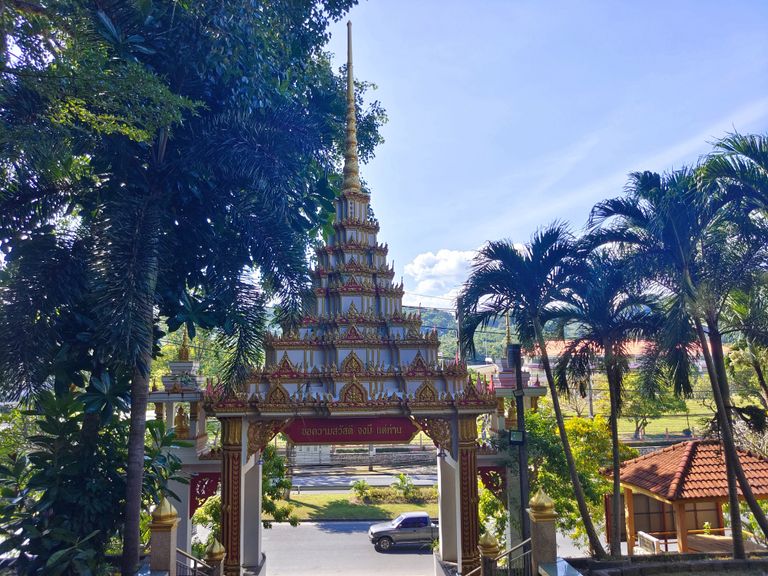
Despite being just 4 kilometers from my house and passing it regularly, I had never actually stepped inside Wat Sapum Thammaram. Today felt like the perfect day to change that. As I made my way up the steep hill that led to the temple, I couldn't help but feel a sense of excitement and anticipation. The road was lined with tall trees that cast dappled shadows on the pavement, and I could see the chedi in the distance.
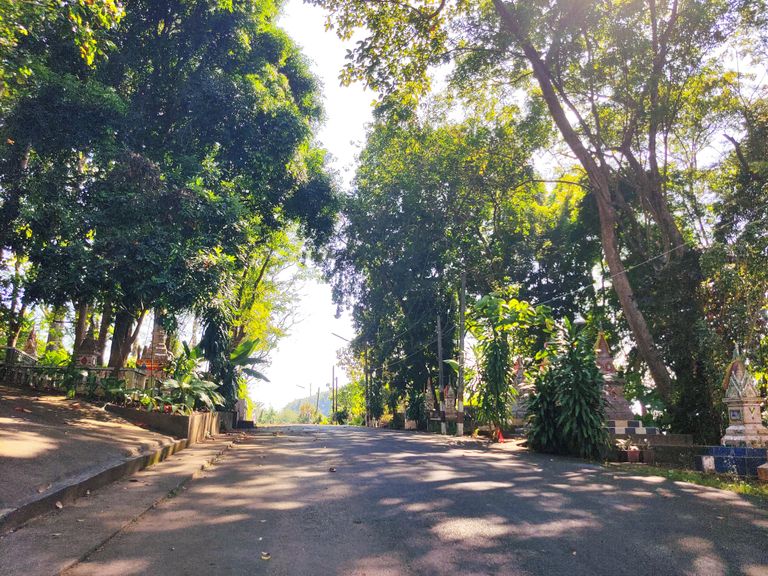
คุณเคยมีวันที่อากาศดีจนไม่อยากอยู่แต่ในบ้านไหม? นั่นคือความรู้สึกของฉันในวันที่สวยงามวันหนึ่งที่ ภูเก็ต ท้องฟ้าสีฟ้าสดใสทอดยาวไปไกลสุดสายตา และสายลมอ่อน ๆ พัดพาความรู้สึกของการผจญภัยมาให้ มันเป็นวันที่ทำให้ฉันคิดว่า "วันนี้แหละ!" — วันที่ฉันจะได้ไปเยี่ยมชม วัดสะพานธรรมาราม สักที วัดแห่งนี้ไม่ได้มีชื่อเสียงเท่าวัดใหญ่ ๆ อย่าง วัดฉลอง แต่ความไม่โด่งดังนี่แหละที่เป็นเสน่ห์ของมัน ด้วยการตั้งอยู่ในพื้นที่เงียบสงบ ทำให้วัดแห่งนี้มอบความสงบใจที่หาได้ยากในที่อื่น ๆ วัดสะพานธรรมาราม เป็นตัวอย่างที่สมบูรณ์แบบของ สถาปัตยกรรมและวัฒนธรรมพุทธไทย
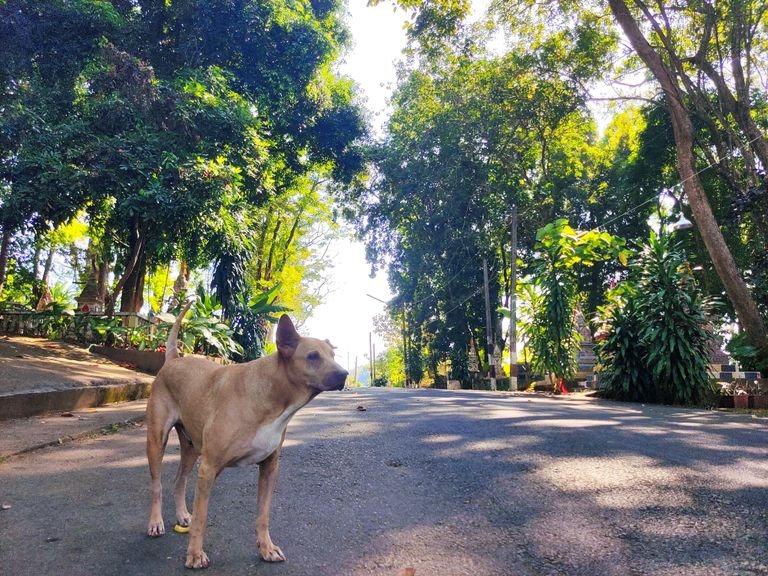
แม้ว่าวัดแห่งนี้จะอยู่ห่างจากบ้านของฉันเพียง 4 กิโลเมตร และฉันผ่านมันเป็นประจำ แต่ฉันไม่เคยเข้าไปข้างในเลยสักครั้ง วันนี้รู้สึกเป็นวันที่เหมาะสมที่สุดที่จะเปลี่ยนแปลงสิ่งนั้น เมื่อฉันมุ่งหน้าขึ้นเนินเขาสูงที่นำไปสู่วัด สองข้างทางเต็มไปด้วยต้นไม้สูงใหญ่ และฉันก็สามารถมองเห็น เจดีย์ อยู่ไกล ๆ
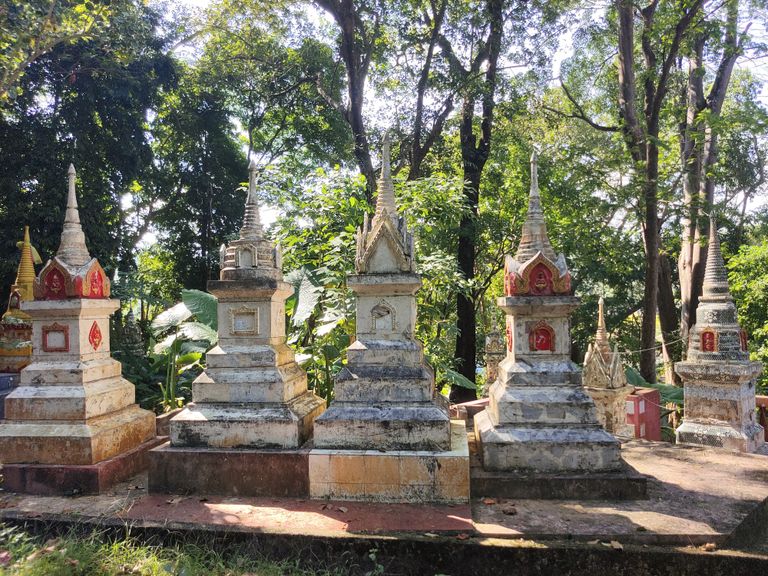
Driving through the temple gates, my attention was immediately drawn to the many chedis scattered across the grounds. In Thai culture, stupas—locally known as chedis—play a significant role in temple life. They often house sacred relics, such as the ashes of loved ones or revered monks, and serve as places of respect and remembrance. Some chedis are even built as acts of merit, with families dedicating them to honor their ancestors and share spiritual benefits with others. It’s a quiet yet powerful reminder of the temple’s role in preserving the spiritual connection between generations
Interestingly, the shape of a chedi carries deep spiritual meaning. The base represents stability, the dome symbolizes meditation, and the spire signifies enlightenment. The pointed topmost element embodies nirvana—the ultimate goal in Buddhism. Every element works together, creating a structure that is as symbolic as it is beautiful.
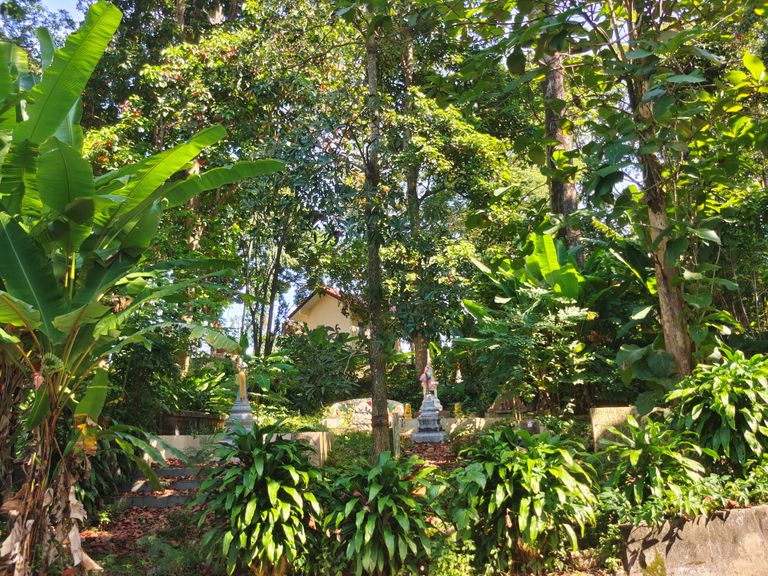
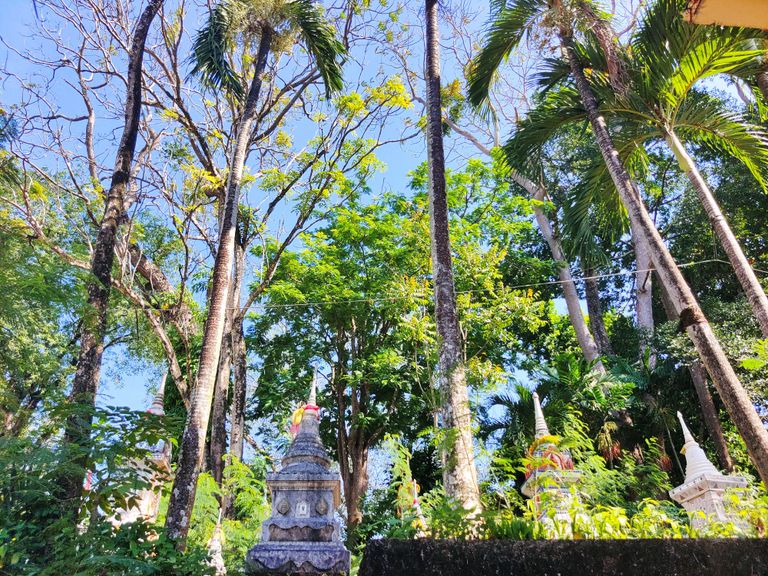
เมื่อฉันขับรถเข้าใกล้วัดมากขึ้น ความรู้สึกผสมผสานระหว่างความอยากรู้อยากเห็นและความไม่สบายใจก็เริ่มก่อตัวขึ้น บรรยากาศที่เงียบสงบ รวมกับการไม่มีผู้มาเยือนคนอื่น ทำให้สถานที่นี้ทั้งสงบและน่าขนลุกเล็กน้อย ฉันจอดรถห่างจากอุโบสถ—หอทำพิธีอุปสมบท และลานจอดรถประมาณ 100 เมตร ชั่วขณะหนึ่งฉันลังเลว่าจะอยู่หรือกลับดี แต่แล้วฉันก็ตัดสินใจข้ามผ่านความสงสัย—ในเมื่อมาถึงแล้ว ทำไมจะไม่ลองสำรวจดูล่ะ?
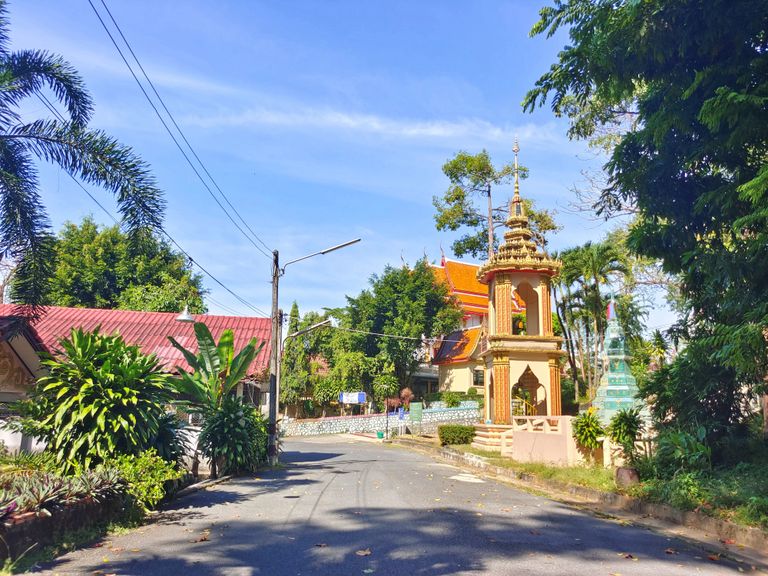
As I drove closer to the temple, a strange mix of curiosity and unease crept in. The quiet surroundings, coupled with the absence of other visitors, created an atmosphere that was both serene and slightly unsettling. I parked my car about 100 meters away from the Ubosot—ordination hall, and the parking lot. For a moment, I hesitated, wondering whether to stay or leave. But then I decided to push past my doubts—after all, I was already here. Why not explore?
Stepping out of the car, the only sounds greeting me were the occasional bark of temple dogs and the distant meows of a few cats. The silence was almost tangible, and I found myself walking towards the Ubosot in search of a monk to make merit, a core concept in Buddhism where performing good deeds—like donating to a temple, helping others, or building sacred structures—is believed to generate spiritual benefits that positively impact both the individual and their loved ones. To my surprise, the temple seemed completely empty, with no one in sight.
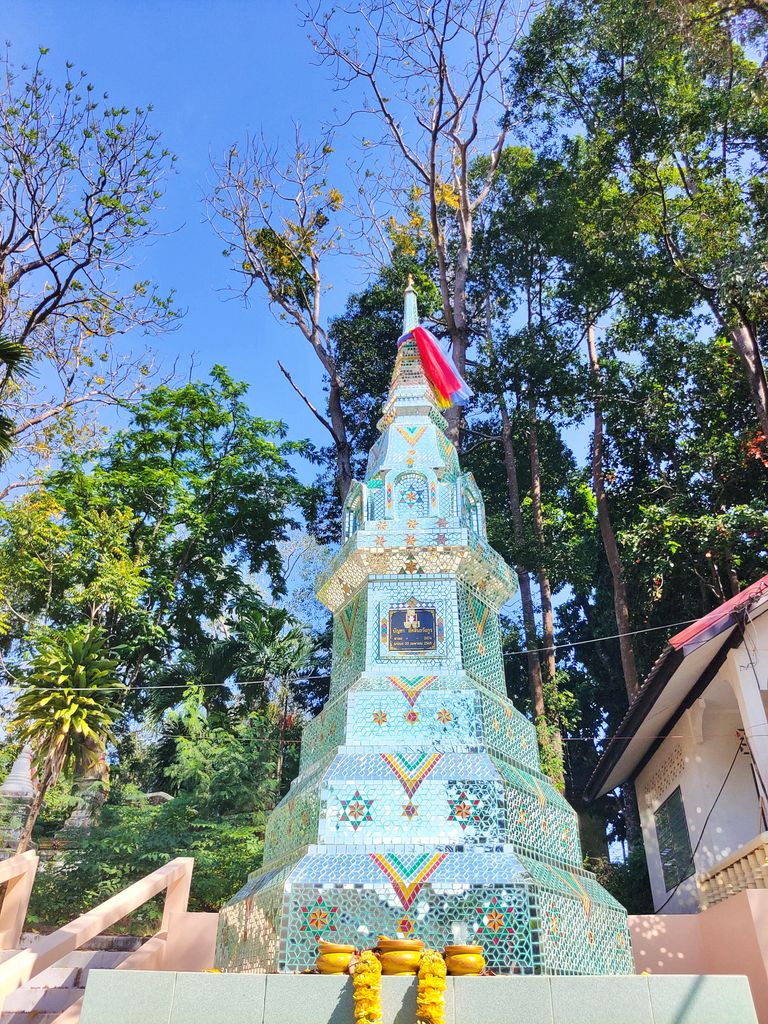
Despite the stillness, the beauty of the temple began to draw me in. The intricate carvings on the walls, the vibrant colors, and the carefully designed architecture spoke of a timeless devotion to craft and faith. It wasn’t long before my attention was captured by a large chedi, standing gracefully amidst the temple grounds.
At first, I felt a twinge of discomfort. Knowing that chedis often house the bones of the deceased gave the structure an air of solemnity that I wasn’t prepared for. But as I stepped closer, my unease began to fade. The intricate details of the chedi—the delicate carvings, the golden accents catching the light—reflected a level of artistry and reverence that was deeply moving. A sense of peace began to settle over me, reminding me of why I had come here in the first place.
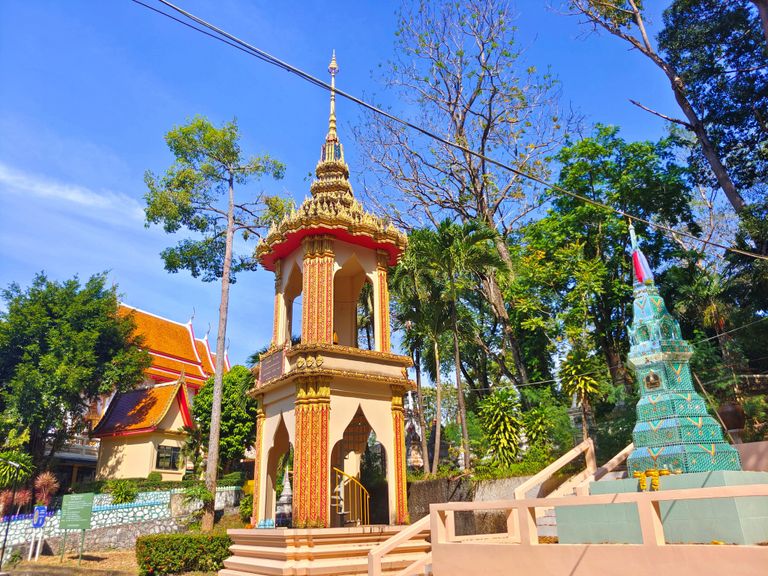
As I continued exploring the temple grounds, my attention was drawn to an elegant bell tower standing near the chedi. In Thai temples, bell towers, or "Ho Rakhang" (หอระฆัง), serve a significant purpose. They house the large bells used during religious ceremonies and daily rituals. The sound of the bell is believed to awaken the mind, calling both monks and laypeople to prayer or meditation. It is also considered a way of spreading blessings and positive energy to the surrounding area.
The bell tower’s design was intricate, with beautifully adorned carvings that reflected the traditional Thai architectural style. Positioned next to the chedi, it formed a symbolic connection between the realms of the living and the spiritual, as the sound of the bell is thought to resonate between these two worlds.
I paused for a moment to take in the scene, reflecting on how these structures carry layers of meaning beyond their aesthetic beauty. They are a reminder of the deep rituals and beliefs that are central to Thai Buddhism, making even the smallest elements of a temple deeply significant.
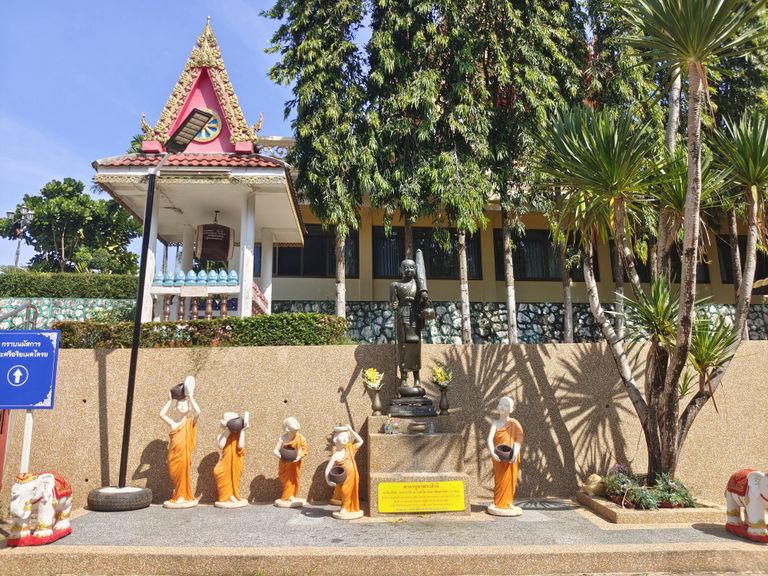
As I continued to explore the temple, I noticed a statue of Phra Sivali (พระสีวลี), one of the most revered disciples of the Buddha, celebrated for his unparalleled merit (good karma). He is often regarded as the foremost disciple in attracting requisites, such as food and shelter, wherever he went. This is believed to be the result of the immense merit he accumulated in his past lives through acts of generosity and kindness.
In Thai Buddhist culture, Phra Sivali is a symbol of prosperity and good fortune. Statues of him often depict a monk holding a walking staff and an alms bowl, representing his journey and the abundance he attracted. Many people venerate him, especially when seeking blessings for success, wealth, and smooth travels.
I approached the statue and noticed that there were offerings of flowers and incense placed at the base. I could see that other visitors to the temple had also placed offerings and were making merit to Phra Sivali. The statue was surrounded by a sense of reverence and I could feel the energy of the people's wishes and prayers.
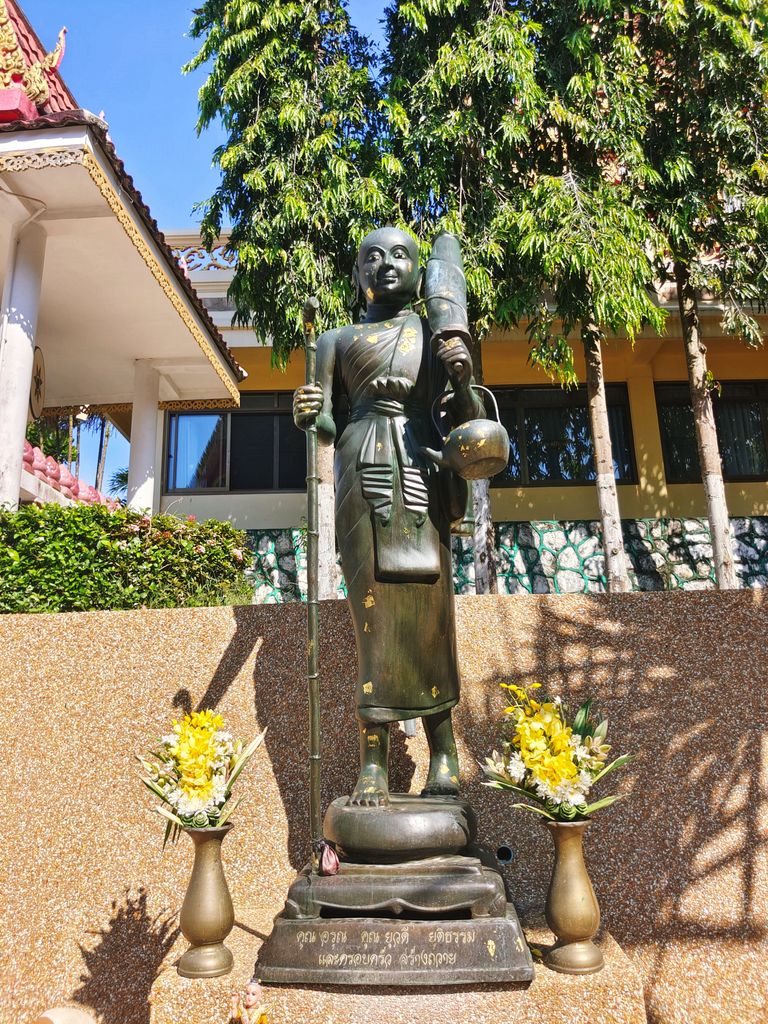
I too made my offering to Phra Sivali and said a silent prayer, asking for good luck and fortune. I felt a sense of hope and positivity in my heart, and I knew that with the help of Phra Sivali, I could face any challenges that came my way.
The statue of Phra Sivali added an extra dimension to my visit to the temple. It was a reminder that the temple is not only a place for spiritual reflection, but also for seeking blessings and good fortune. It gave me hope that good luck would come my way, and that no matter what happens, I will have the support of Phra Sivali.
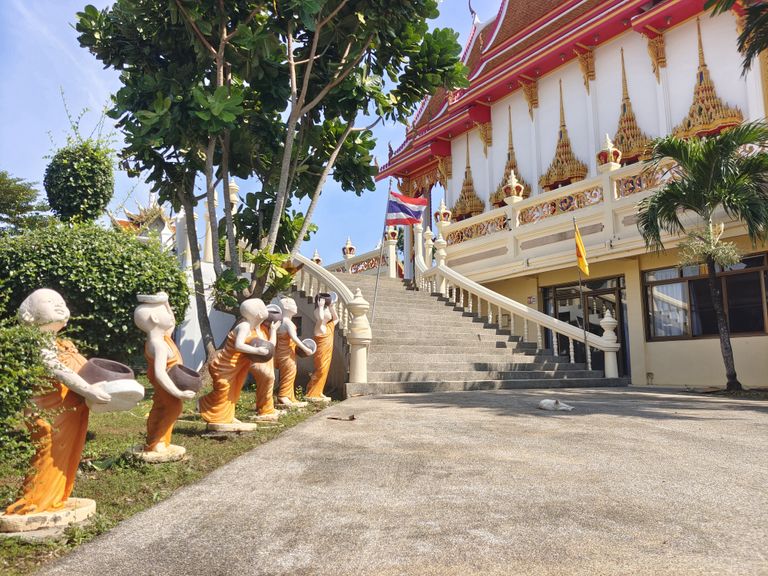

After visiting Phra Sivali statue and pagoda, I felt a renewed sense of purpose and decided to continue exploring the temple. I walked up a flight of stairs and found myself at the entrance of the Ubosot (อุโบสถ), also known as the ordination hall, the most sacred structure within a Buddhist temple complex. It serves as the central place for performing important monastic rituals, including the ordination of monks, which gives the building its name. The term "Ubosot" is derived from the Pali word "uposatha", referring to the Buddhist observance days when monks gather to recite the Patimokkha, the monastic code of conduct.
The Ubosot stood beautifully, reflecting the sunlight and casting a warm glow over the surrounding area. Elevated on a platform and enclosed by "sima" boundary stones, it marked the sacred space where important ceremonies are conducted.
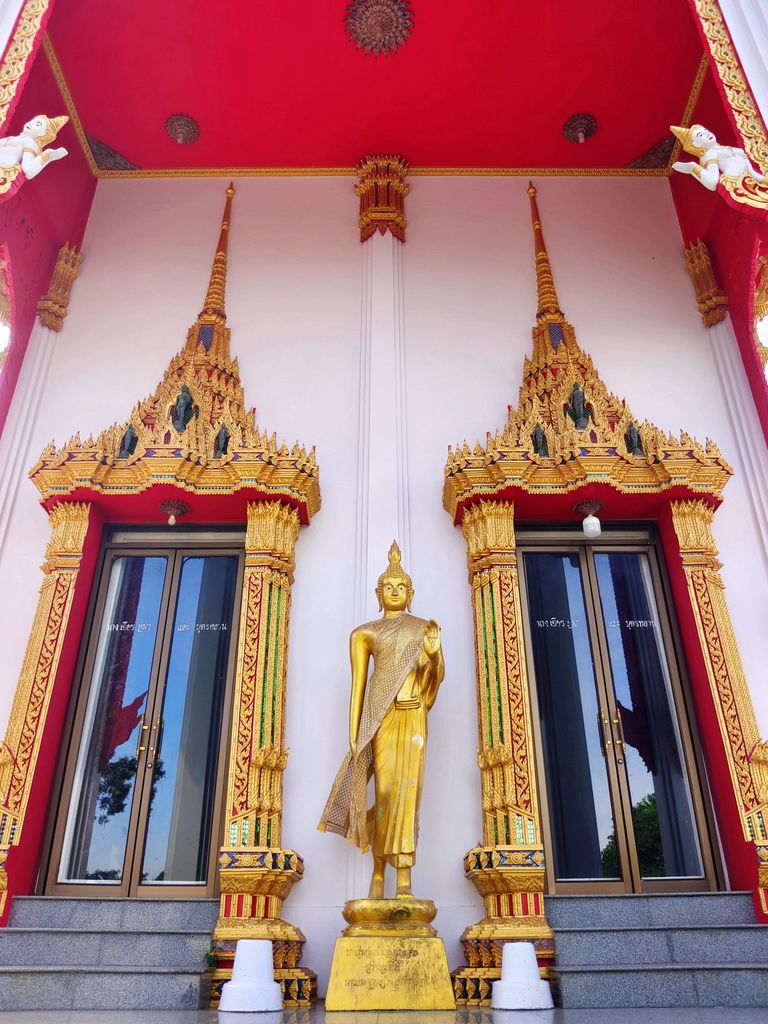
As I approached the Ubosot, I was greeted by a striking Buddha image enshrined in front of the closed doors. The statue was magnificent, with intricate details that showcased the artistry behind its creation. Its serene expression radiated wisdom and tranquility, inviting a sense of peace as I stood in quiet admiration.
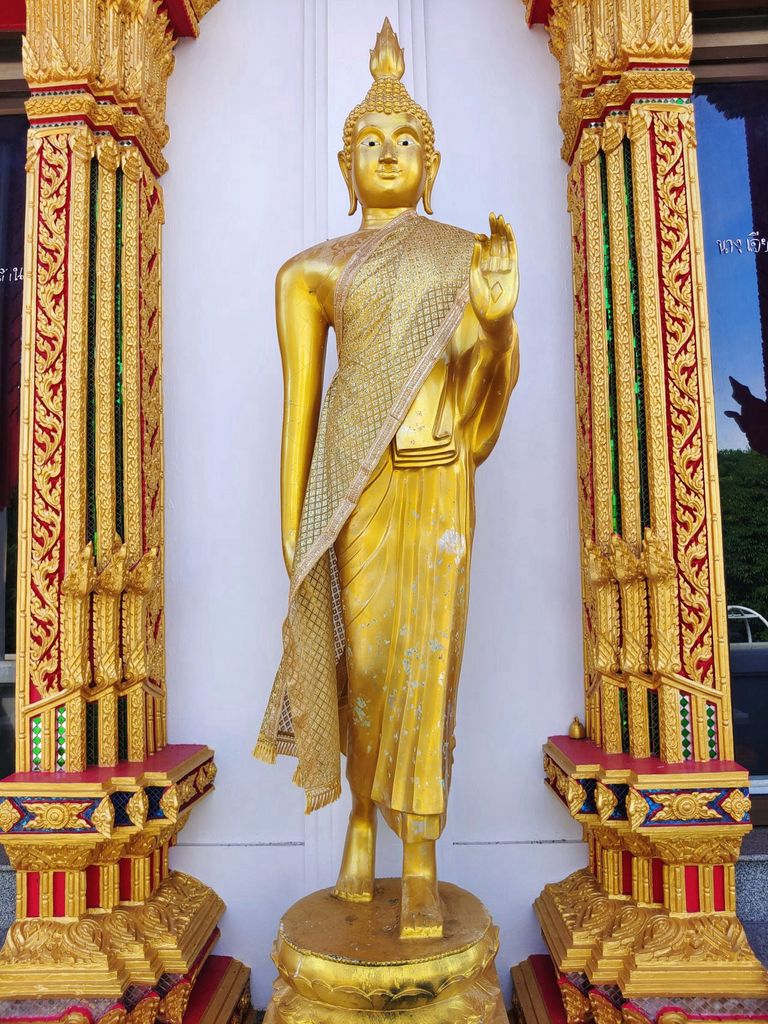
I walked around the statue, admiring its beauty from every angle. I took several pictures, capturing the moment and the beauty of the statue. The Ubosot was closed so I couldn't go inside but the large Buddha image in front of it was enough to make the visit worthwhile.
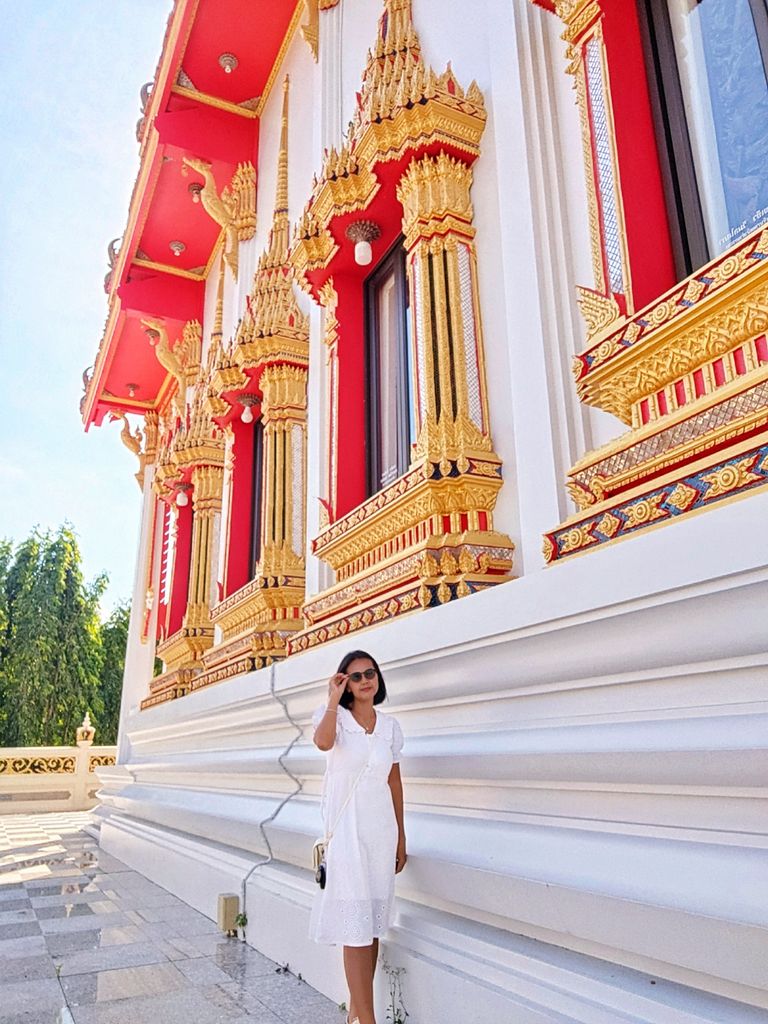
As I walked around the Ubosot, taking in the sights, I noticed that on the west side, there was a beautiful view of the mountains. The view was breathtaking, and I couldn't help but take a moment to admire it. The mountains were lush and green, and in the distance, I could see a range of peaks, reaching towards the sky.
I walked towards the edge of the Ubosot and looked out towards the mountains. The view was truly stunning, and I felt a sense of peace and tranquility wash over me. The mountain range provided an idyllic backdrop to the temple and Ubosot, making the atmosphere even more serene and peaceful.
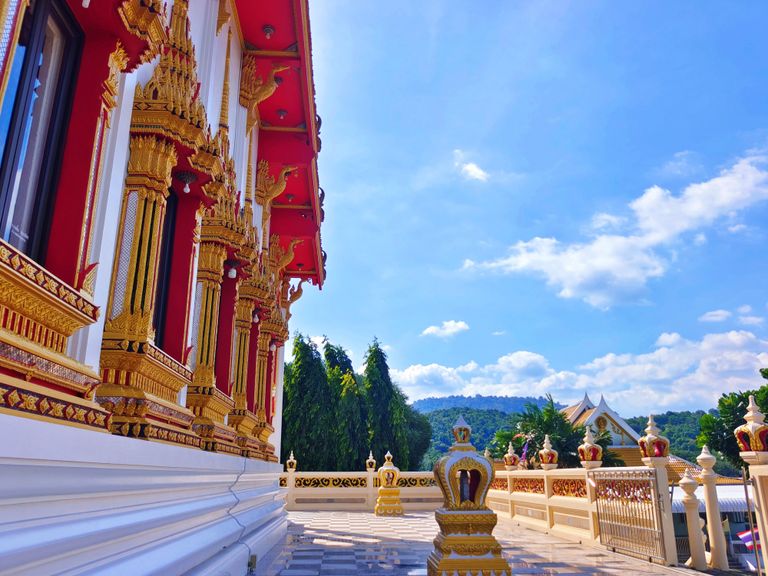
I also noticed that on the east side of the Ubosot, there was an equally beautiful view of the sea. The view was spectacular, and I couldn't help but take a moment to take it in. The water was a deep blue, and the horizon was dotted with fishing boats.
I walked towards the edge of the Ubosot and looked out towards the sea. The sun was shining brightly, casting a warm glow over the water. The view was truly breathtaking and I felt a sense of calm and tranquility wash over me. The sea and the sound of the waves provided a perfect contrast to the serenity of the temple and Ubosot and made the atmosphere even more peaceful.
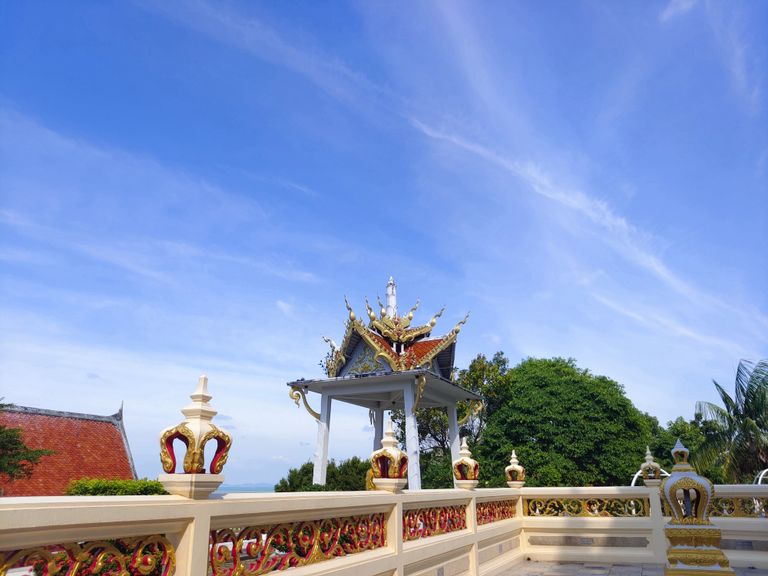
On the east side of the Ubosot, there was a large and magnificent Buddha statue facing east, a direction traditionally associated with enlightenment in Buddhism, as it symbolizes the rising sun and new beginnings. Facing east is also a reminder of the Buddha’s teachings, as he attained enlightenment under the Bodhi tree while seated facing this direction. The statue was the focal point of the temple, and I couldn't help but feel drawn to it.
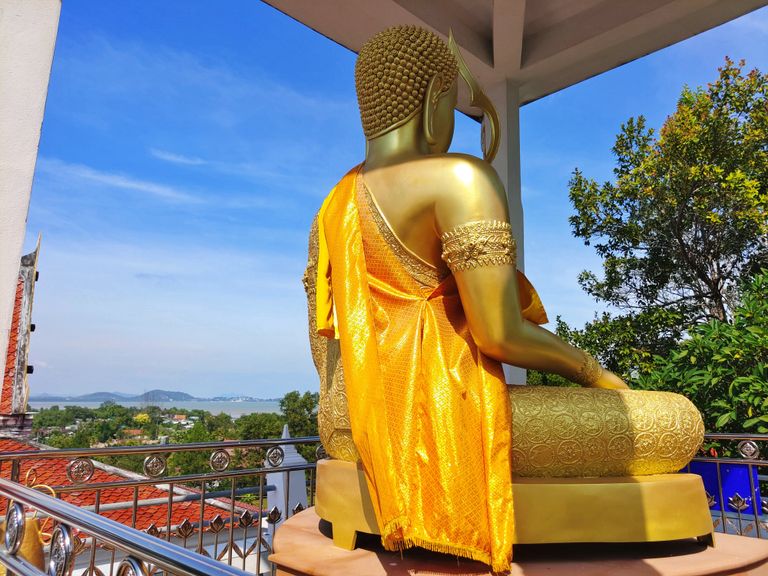
I walked towards the statue, admiring its beauty and craftsmanship. The statue depicted the Buddha in the Bhumisparsha Mudra, or “Earth-Touching Gesture,” as indicated by the placement of one hand extended downward. This posture signifies the moment of the Buddha’s enlightenment when he called upon the earth to bear witness to his spiritual awakening.
In his other hand, the Buddha held a walking stick, a symbol less commonly depicted but deeply significant. This posture is sometimes called Phra Siwali, representing blessings, protection, and the prosperous journey of monks who rely on their faith and the generosity of others.
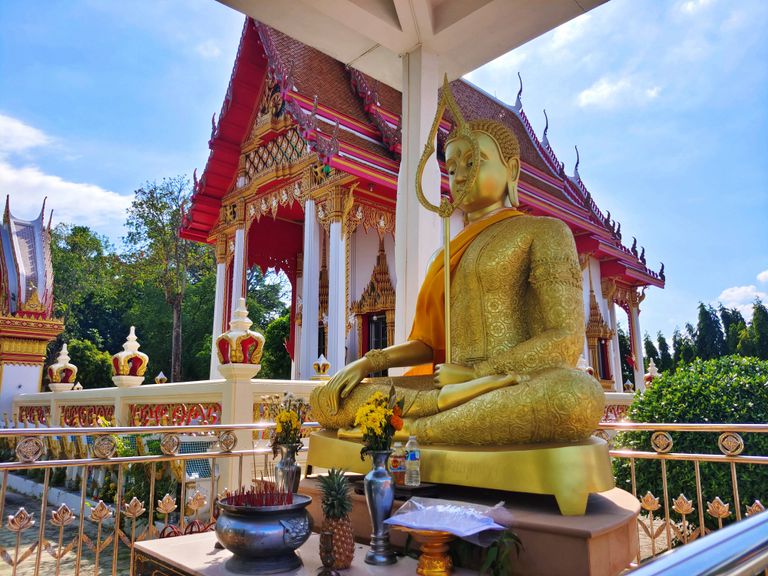
I approached the statue and noticed that there were offerings of flowers and incense placed at the base. I could see that other visitors to the temple had also placed offerings and were making merit. The statue was surrounded by a sense of reverence and I could feel the energy of the people's wishes and prayers.
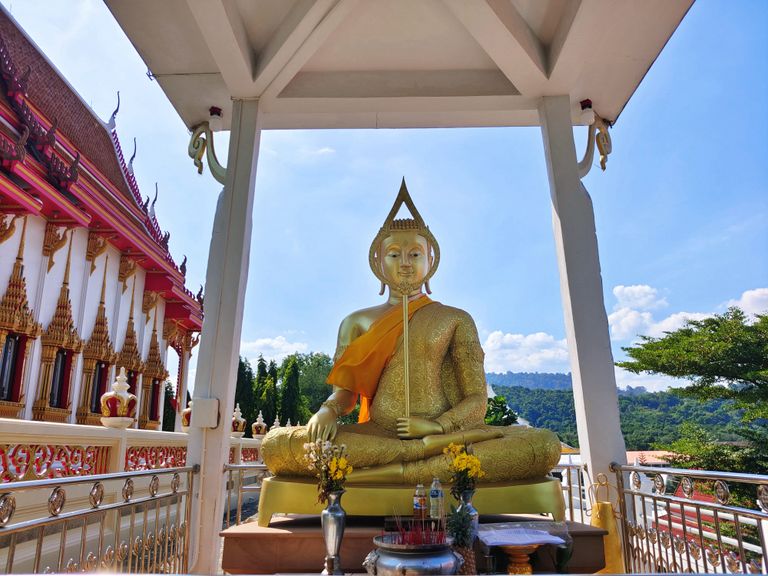
I too made my offering to the Buddha statue and said a silent prayer, asking for guidance and wisdom. As I walked around the statue, I took in the serene atmosphere and the magnificent view of the sea. This statue was not only a symbol of Buddhism but also a representation of the connection of humanity with nature.
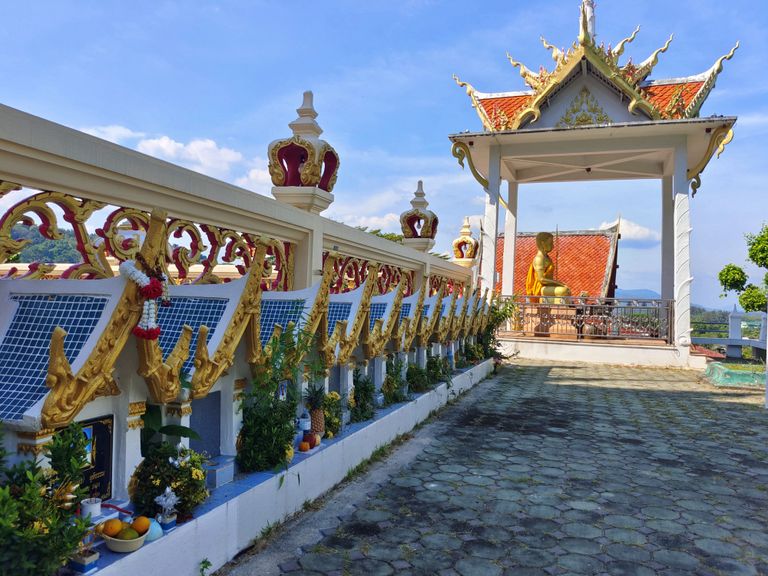
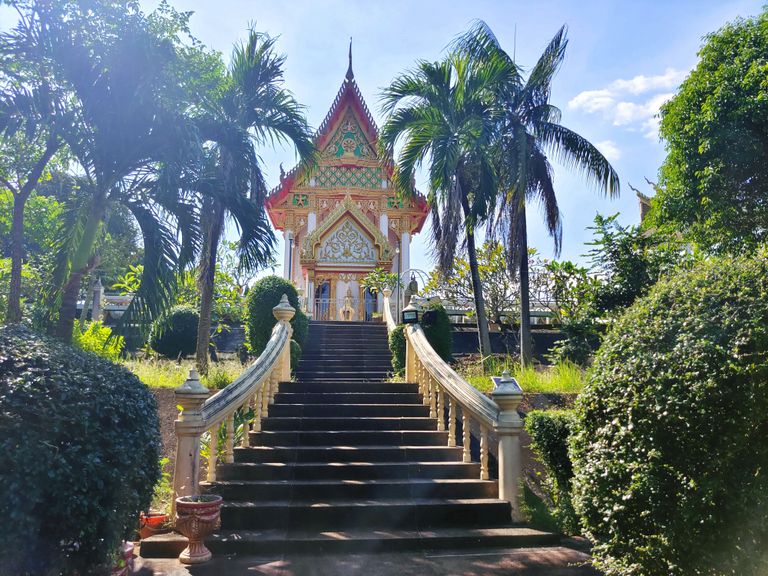
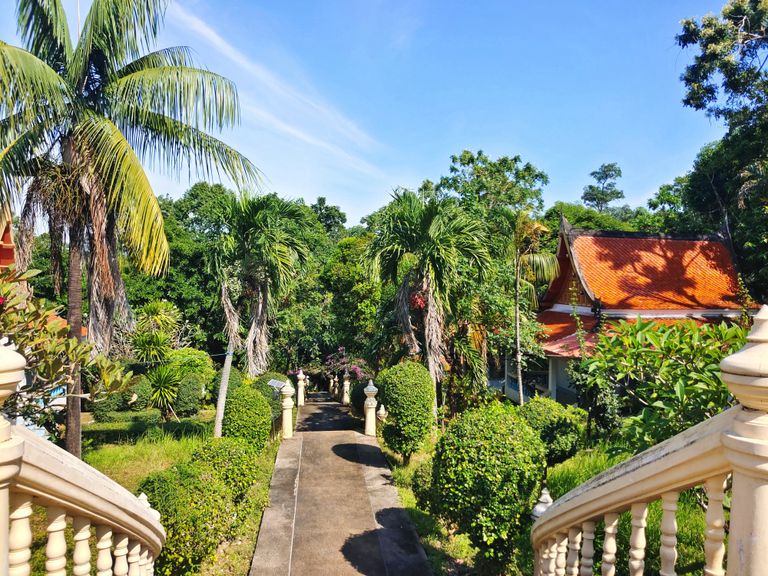
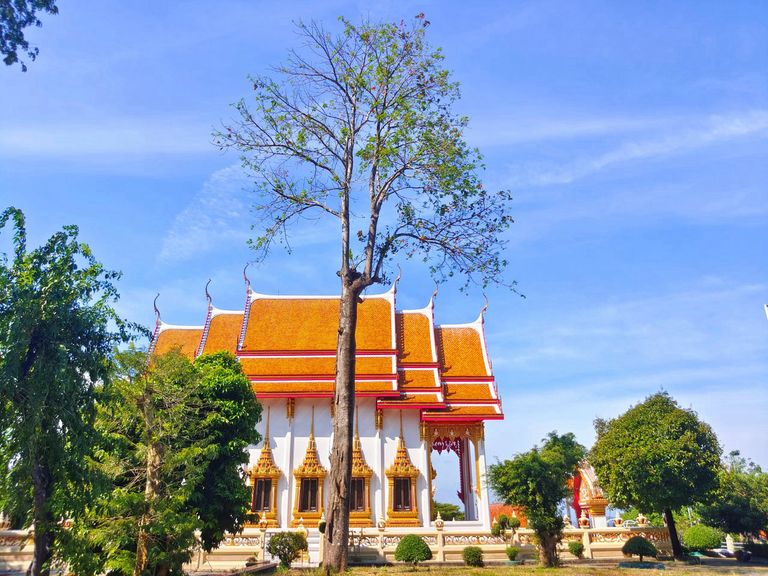
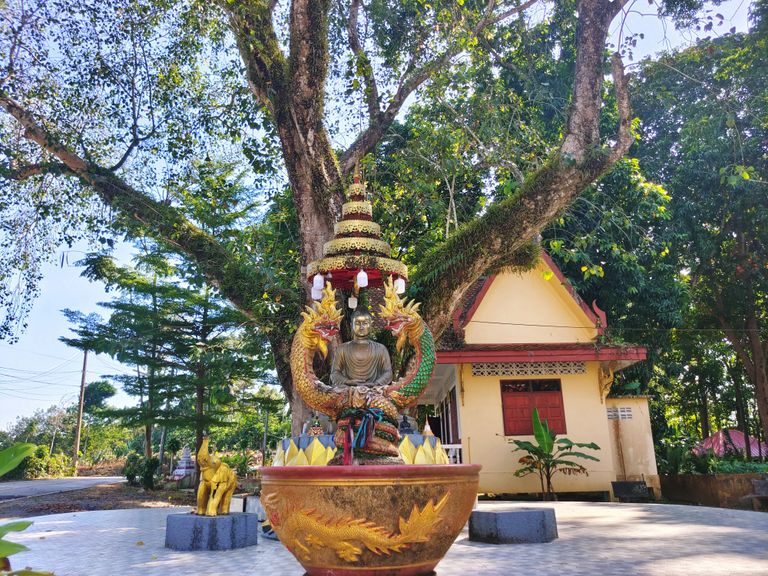
After spending some time admiring the large Buddha statue, I felt that it was time for me to head back home. I decided to walk a different way than the one I had come in on, and as I was walking, I came across a striking black Buddha image seated under a large Bodhi tree. This serene statue represents the moment of the Buddha’s enlightenment, symbolizing wisdom, spiritual awakening, and tranquility. The golden lotus pedestal it rests upon signifies purity and rising above worldly struggles, while the canopy above adds a sense of reverence and divine protection.
The statue was made of black stone and was quite different from the other statues I had seen at the temple. It was situated in a secluded area, and the whole area was very quiet, with only the sound of the leaves rustling in the wind. The Bodhi tree under which the statue was placed was large and ancient, providing shade and a sense of calm to the area.
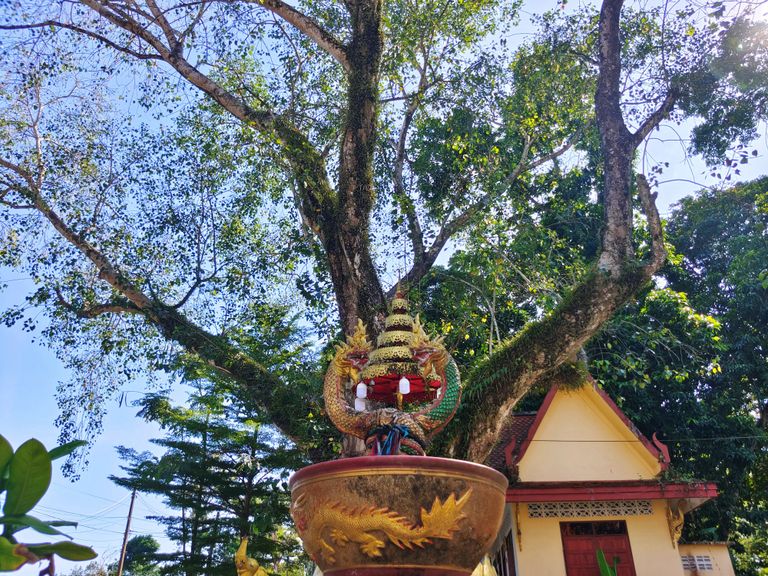
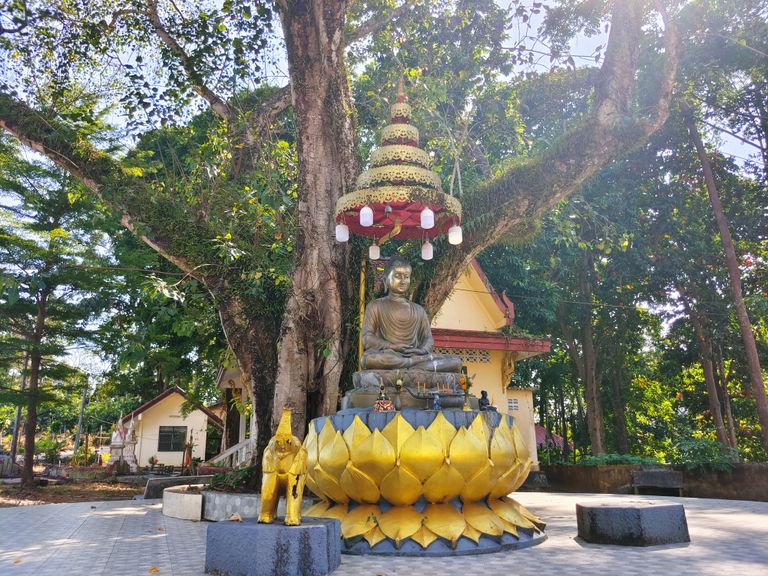
I approached the statue and made an offering of incense, feeling a sense of peace and reverence as I did. The black Buddha statue had a mysterious quality and the setting under the Bodhi tree added to the peaceful atmosphere of the temple. The secluded area and the large tree made it a perfect place for quiet contemplation and reflection.
The black Buddha statue was an unexpected and serene ending to my visit to Wat Sapum Thammaram. Standing under the majestic Bodhi tree, it reminded me of the peace and wisdom that Buddhist teachings strive to inspire. This tranquil moment made me reflect on how much beauty and meaning can be found in the quiet corners of a place, far from the crowds.
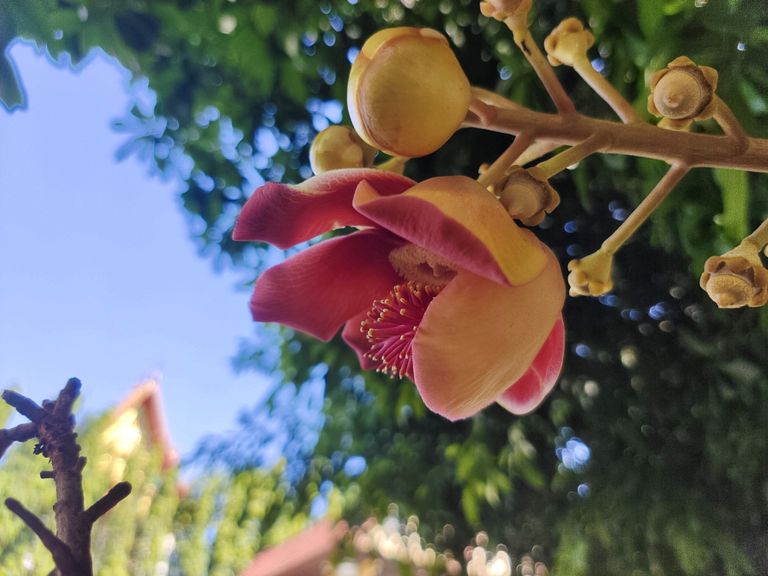
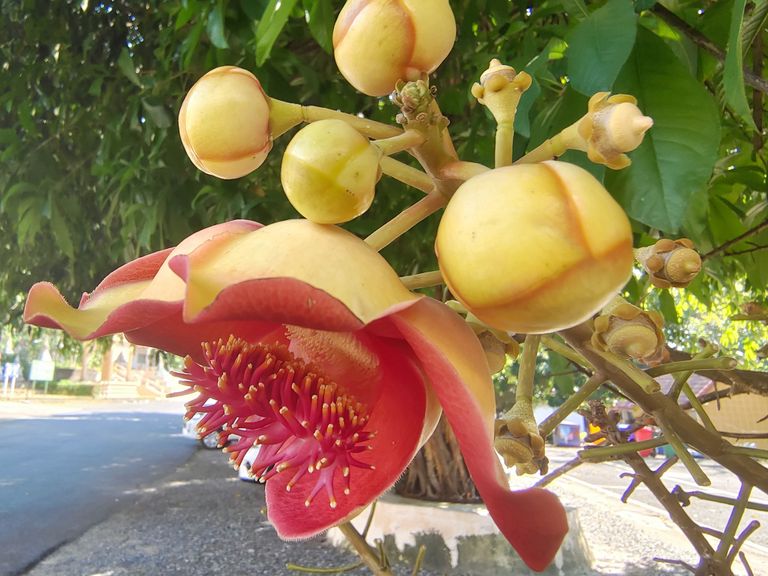
As I walked back to my car, I felt a deep sense of gratitude and peace, knowing that this visit would remain a cherished memory. It’s not just the grand temples or famous landmarks that make Thailand special—it’s also the hidden gems like this, where you can connect with the culture, spirituality, and yourself.
Thank you for joining me on this journey to Wat Sapum Thammaram! I hope you enjoyed exploring its beauty and tranquility with me. Stay tuned for more adventures as I continue to share the hidden gems and rich culture of Thailand. 🌴✨
Stay in Touch! 🌏
If you enjoyed this post, don’t forget to:
- ReBlurt it to share the adventure with others! ✨😊
- Follow me for updates on my future posts and discoveries. 🚶♀️🌴
- Comment below to share your thoughts or tell me about your own experiences! 💬✨
Your support fuels my passion for sharing more stories, moments, and adventures with you. Let’s explore the world together! 💖🌏
🌸 Join My Thai Adventures! 🌸
If you’re visiting my blog for the first time, welcome! Here, I share my love for Thailand through its hidden treasures, scenic beaches, cultural wonders, local food, and yes—even occasional posts about adorable Thai cats! 🐾 So, let’s make every day an adventure together—follow me and let’s uncover the magic of Thailand! 🌼
หากคุณเป็นผู้เยี่ยมชมใหม่ ฉันขอต้อนรับอย่างอบอุ่น! ฉันจะแบ่งปันเรื่องราวการผจญภัยทั่วไทย ทั้งธรรมชาติ วัฒนธรรม และอาหารแสนอร่อย ไปสำรวจด้วยกันนะ! 🌴
| 📷 Photo Credit | Smartphone |
|---|---|
| Model | Vivo X60 5G |
| Type | Android |
| Photographer | @baiboua |
| Location | Wat Sapum Thammaram, Phuket—Thailand 🇹🇭 |
🌸 Thank you for your support 🌸
💖 ขอบคุณสำหรับการโหวต 💖
💕 เลิฟนะยู้ววววววว 💕
